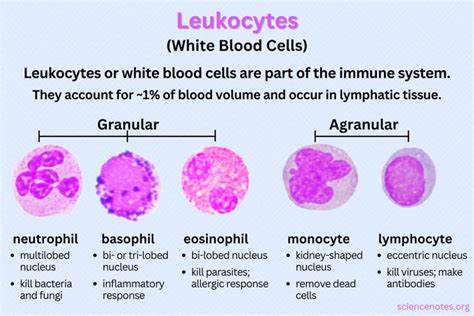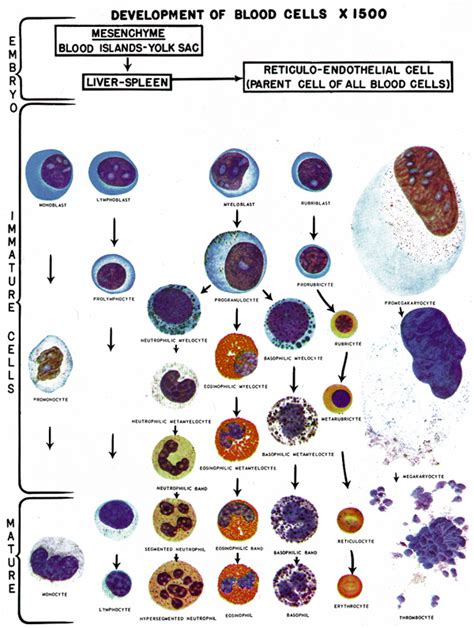Intro
Learn about the White Blood Cell Differential Guide, including types, counts, and ratios, to understand neutrophils, lymphocytes, monocytes, eosinophils, and basophils in blood tests, diagnosing infections, inflammation, and diseases with accurate lab results and medical interpretations.
The human body is a complex and fascinating system, with various components working together to maintain overall health and well-being. One crucial aspect of this system is the immune system, which protects the body against infections, diseases, and foreign invaders. A key component of the immune system is white blood cells, also known as leukocytes. These cells play a vital role in defending the body against pathogens and diseases. In this article, we will delve into the world of white blood cell differentials, exploring their importance, types, and functions.
White blood cells are an essential part of the immune system, and their differential count is a critical diagnostic tool used by healthcare professionals to diagnose and monitor various medical conditions. A white blood cell differential count, also known as a differential or diff, is a test that measures the number of different types of white blood cells present in the blood. This test is crucial in helping healthcare professionals diagnose and treat various medical conditions, including infections, inflammatory diseases, and blood disorders.
The importance of white blood cell differentials cannot be overstated. By analyzing the different types of white blood cells present in the blood, healthcare professionals can gain valuable insights into the body's immune response and identify potential health issues. For instance, an elevated white blood cell count can indicate the presence of an infection or inflammation, while a low count can suggest immunodeficiency or bone marrow disorders. In this article, we will explore the different types of white blood cells, their functions, and the significance of white blood cell differentials in diagnosing and monitoring medical conditions.
Introduction to White Blood Cells

White blood cells are a type of eukaryotic cell that plays a crucial role in the immune system. They are produced in the bone marrow and circulate in the blood and lymphatic system. There are five main types of white blood cells, each with unique functions and characteristics. These cells work together to protect the body against infections, diseases, and foreign invaders. The five main types of white blood cells are neutrophils, lymphocytes, monocytes, eosinophils, and basophils.
Types of White Blood Cells
The five main types of white blood cells are: * Neutrophils: These cells are the most abundant type of white blood cell and play a crucial role in fighting bacterial and fungal infections. * Lymphocytes: These cells are responsible for specific immune responses, such as recognizing and attacking specific pathogens. * Monocytes: These cells mature into macrophages, which are large cells that engulf and digest foreign particles and microorganisms. * Eosinophils: These cells play a role in fighting parasitic infections and in allergic reactions. * Basophils: These cells are involved in inflammatory responses, particularly in allergic reactions.White Blood Cell Differential Count

A white blood cell differential count is a test that measures the number of different types of white blood cells present in the blood. This test is usually performed as part of a complete blood count (CBC) and is essential in diagnosing and monitoring various medical conditions. The differential count is calculated by multiplying the total white blood cell count by the percentage of each type of white blood cell present in the blood.
Interpreting White Blood Cell Differential Results
Interpreting white blood cell differential results requires a thorough understanding of the normal ranges and variations of each type of white blood cell. The results are typically reported as a percentage of the total white blood cell count. For instance, a normal neutrophil count is usually between 45% and 75% of the total white blood cell count. Abnormal results can indicate various medical conditions, such as infections, inflammatory diseases, or blood disorders.Medical Conditions Diagnosed with White Blood Cell Differentials

White blood cell differentials are essential in diagnosing and monitoring various medical conditions. Some of the medical conditions that can be diagnosed with white blood cell differentials include:
- Infections: Bacterial, viral, or fungal infections can cause an increase in white blood cell count.
- Inflammatory diseases: Conditions such as arthritis, lupus, or Crohn's disease can cause an increase in white blood cell count.
- Blood disorders: Conditions such as leukemia, lymphoma, or anemia can cause abnormal white blood cell counts.
- Immunodeficiency: Conditions such as HIV/AIDS or immunodeficiency disorders can cause a decrease in white blood cell count.
Limitations and Challenges of White Blood Cell Differentials
While white blood cell differentials are a valuable diagnostic tool, they have limitations and challenges. For instance, abnormal results can be caused by various factors, such as laboratory errors, sample contamination, or patient-related factors. Additionally, white blood cell differentials may not always provide a definitive diagnosis, and further testing may be required to confirm a diagnosis.Practical Applications of White Blood Cell Differentials

White blood cell differentials have various practical applications in healthcare. Some of the practical applications include:
- Monitoring treatment response: White blood cell differentials can be used to monitor the response to treatment in patients with infections, inflammatory diseases, or blood disorders.
- Diagnosing medical conditions: White blood cell differentials can be used to diagnose various medical conditions, such as infections, inflammatory diseases, or blood disorders.
- Screening for diseases: White blood cell differentials can be used as a screening tool to detect early signs of diseases, such as leukemia or lymphoma.
Future Directions and Emerging Trends
The field of white blood cell differentials is constantly evolving, with emerging trends and technologies. Some of the future directions and emerging trends include: * Automated differential counting: Automated systems can quickly and accurately count white blood cells, reducing laboratory errors and improving diagnostic accuracy. * Molecular diagnostics: Molecular diagnostic techniques, such as PCR or next-generation sequencing, can provide more accurate and detailed information about white blood cell differentials. * Personalized medicine: White blood cell differentials can be used to tailor treatment to individual patients, taking into account their unique genetic and molecular profiles.Conclusion and Final Thoughts

In conclusion, white blood cell differentials are a vital diagnostic tool used to diagnose and monitor various medical conditions. By analyzing the different types of white blood cells present in the blood, healthcare professionals can gain valuable insights into the body's immune response and identify potential health issues. While white blood cell differentials have limitations and challenges, they remain a crucial component of modern healthcare. As the field continues to evolve, emerging trends and technologies will likely improve diagnostic accuracy and provide more personalized treatment options.
We invite you to share your thoughts and experiences with white blood cell differentials in the comments section below. Have you or a loved one been diagnosed with a medical condition using white blood cell differentials? What were your experiences with the diagnostic process? Share your story and help raise awareness about the importance of white blood cell differentials in healthcare.
What is a white blood cell differential count?
+A white blood cell differential count is a test that measures the number of different types of white blood cells present in the blood.
What are the different types of white blood cells?
+The five main types of white blood cells are neutrophils, lymphocytes, monocytes, eosinophils, and basophils.
What is the normal range for white blood cell count?
+The normal range for white blood cell count is typically between 4,000 and 11,000 cells per microliter of blood.
What are some medical conditions diagnosed with white blood cell differentials?
+Some medical conditions diagnosed with white blood cell differentials include infections, inflammatory diseases, blood disorders, and immunodeficiency.
What are the limitations and challenges of white blood cell differentials?
+Limitations and challenges of white blood cell differentials include laboratory errors, sample contamination, patient-related factors, and the need for further testing to confirm a diagnosis.
